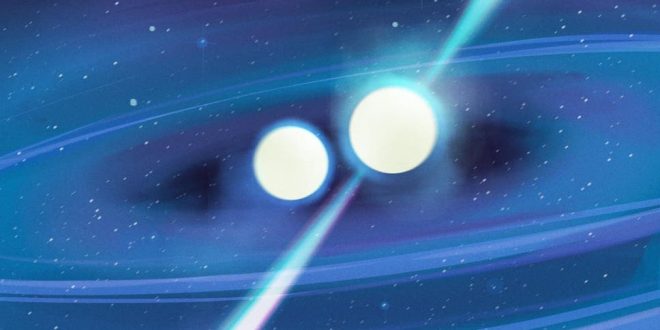Scientists have found a strange “pulsar” deep in space that could solve some of the universe’s most fundamental mysteries.
The discovery could help us understand how dead stars collide and the universe’s expansion, according to the researchers who found it.
Eventually, the two stars will collide, sending out energy in gravitational waves that will disturb spacetime in ways that can be detected across the universe.
It’s that unusual difference that scientists hope can be used to provide important clues about some of the deepest, unsolved mysteries of the universe. Those include a better estimate of the Hubble constant, or the rate of expansion of the universe, as well as what the objects are actually made of.
“Such a disruption would allow astrophysicists to gain important new clues about the exotic matter that makes up the interiors of these extreme, dense objects,” said Paulo Freire from the Max Planck Institute for Radio Astronomy.
“This matter is still a major mystery – it’s so dense that scientists still don’t know what it is actually made of. These densities are far beyond what we can reproduce in Earth-based laboratories.”
The vast difference between the two neutron stars is not something that scientists had expected to find until now.
“Most theories about this event assumed that neutron stars locked in binary systems are very similar in mass,” said lead researcher Dr Robert Ferdman, from UEA’s School of Physics, in a statement.
“These stars will collide and merge in around 470 million years, which seems like a long time, but it is only a small fraction of the age of the Universe.
“Because one neutron star is significantly larger, its gravitational influence will distort the shape of its companion star – stripping away large amounts of matter just before they actually merge, and potentially disrupting it altogether.
“This ‘tidal disruption’ ejects a larger amount of hot material than expected for equal-mass binary systems, resulting in a more powerful emission.
“Although GW170817 can be explained by other theories, we can confirm that a parent system of neutron stars with significantly different masses, similar to the PSR J1913+1102 system, is a very plausible explanation.
“Perhaps more importantly, the discovery highlights that there are many more of these systems out there – making up more than one in 10 merging double neutron star binaries.”
The Independent
 Lebanese Ministry of Information
Lebanese Ministry of Information



